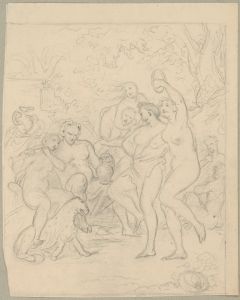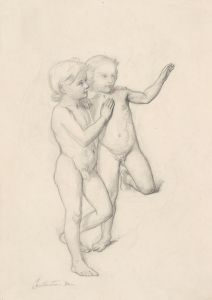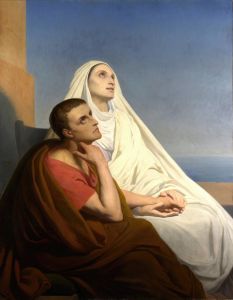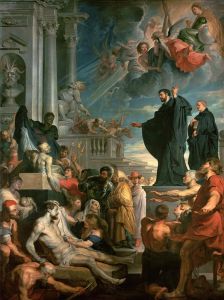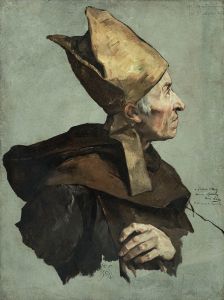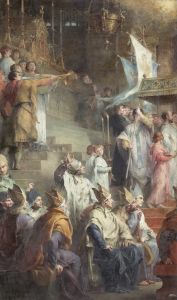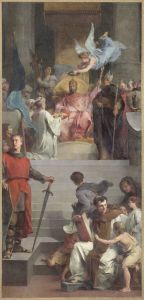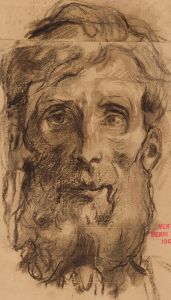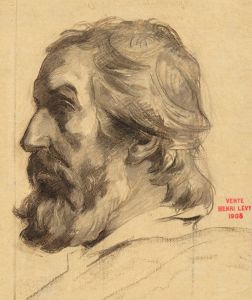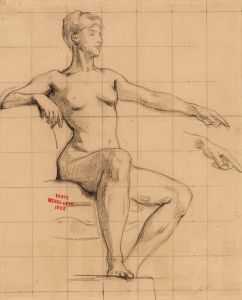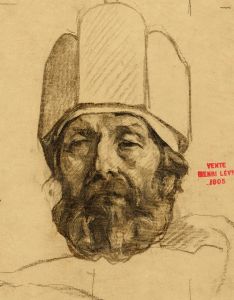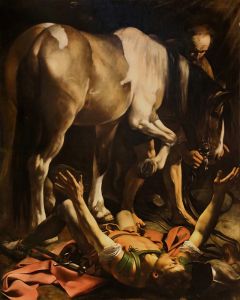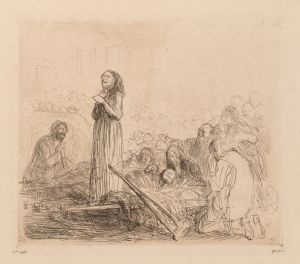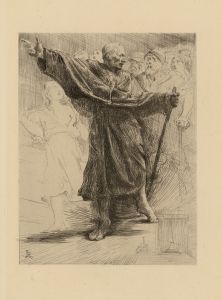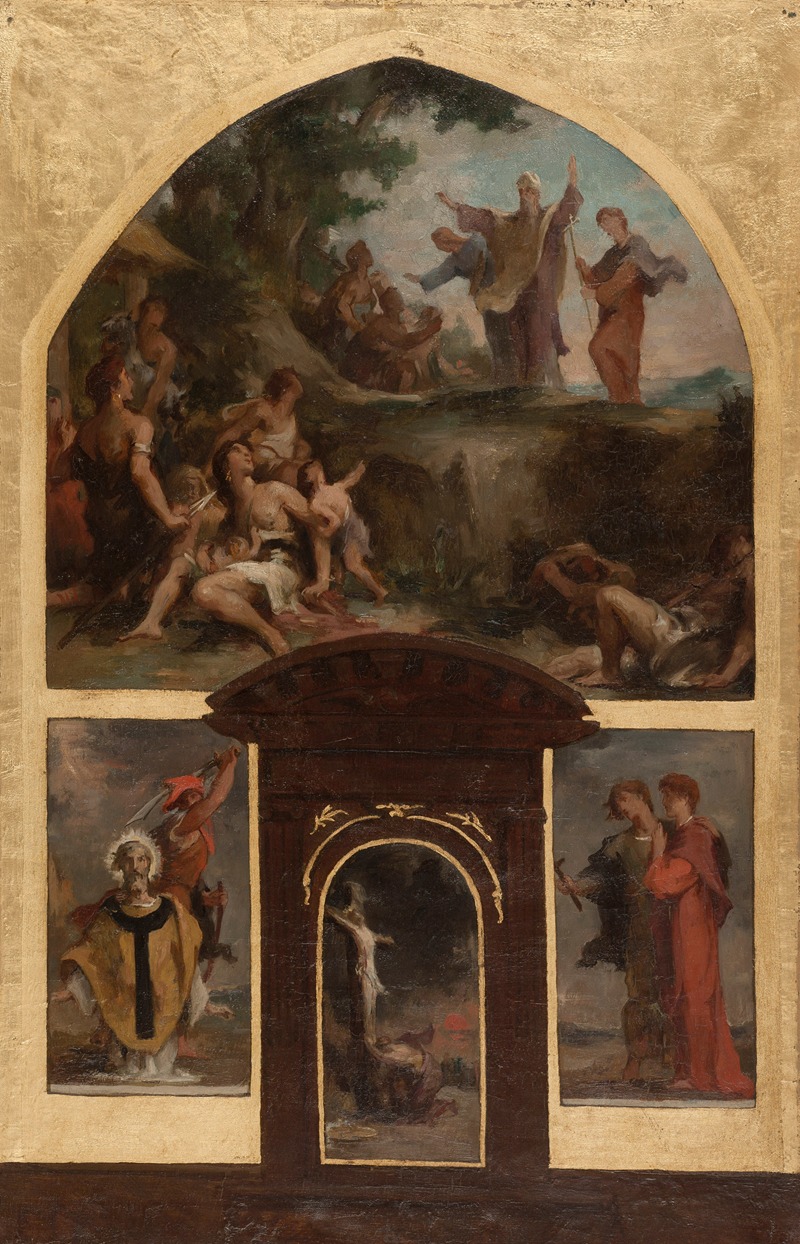
Prédication de saint Denis et conversion des Gaulois. Décollation de saint Denis. Christ en croix. Saint Rustique et saint Eleuthère.
A hand-painted replica of Henri Leopold Lévy’s masterpiece Prédication de saint Denis et conversion des Gaulois. Décollation de saint Denis. Christ en croix. Saint Rustique et saint Eleuthère., meticulously crafted by professional artists to capture the true essence of the original. Each piece is created with museum-quality canvas and rare mineral pigments, carefully painted by experienced artists with delicate brushstrokes and rich, layered colors to perfectly recreate the texture of the original artwork. Unlike machine-printed reproductions, this hand-painted version brings the painting to life, infused with the artist’s emotions and skill in every stroke. Whether for personal collection or home decoration, it instantly elevates the artistic atmosphere of any space.
Henri Léopold Lévy's painting, "Prédication de saint Denis et conversion des Gaulois. Décollation de saint Denis. Christ en croix. Saint Rustique et saint Eleuthère," is a notable work of art that captures significant moments in the life of Saint Denis, a revered figure in Christian history. Lévy, a French painter born in 1840, was known for his historical and religious compositions, often drawing inspiration from biblical and legendary themes.
This particular painting is a large-scale work that depicts several key events associated with Saint Denis, the first bishop of Paris and a martyr who played a crucial role in the spread of Christianity in Gaul, present-day France. The painting is divided into distinct sections, each illustrating a different episode from the saint's life and martyrdom.
The first section, "Prédication de saint Denis et conversion des Gaulois," portrays Saint Denis preaching to the Gauls. This scene captures the moment when Denis, along with his companions Rustique and Eleuthère, arrived in Gaul to evangelize the local population. The painting likely emphasizes the transformative impact of Denis's teachings, which led to the conversion of many Gauls to Christianity. Lévy's depiction of this scene would have been intended to highlight the saint's role as a pioneering missionary and the spiritual awakening of the region.
The second section, "Décollation de saint Denis," illustrates the martyrdom of Saint Denis. According to tradition, Denis was beheaded on the hill of Montmartre in Paris during the persecution of Christians under the Roman Empire. This dramatic moment is a central theme in the hagiography of Saint Denis, symbolizing his unwavering faith and ultimate sacrifice for his beliefs. Lévy's portrayal of this event would have aimed to convey the intensity and solemnity of the martyrdom, capturing the saint's enduring legacy as a symbol of courage and devotion.
The third section, "Christ en croix," features the crucifixion of Christ, a common motif in Christian art that underscores the themes of sacrifice and redemption. By including this scene, Lévy connects the martyrdom of Saint Denis to the broader narrative of Christian salvation, drawing parallels between the suffering of Christ and that of his followers.
Finally, the painting includes representations of Saint Rustique and Saint Eleuthère, companions of Saint Denis who were also martyred for their faith. Their inclusion in the artwork serves to emphasize the collective mission and shared fate of these early Christian figures, highlighting their contributions to the spread of Christianity and their steadfastness in the face of persecution.
Henri Léopold Lévy's painting is a testament to the enduring power of religious art to convey complex narratives and evoke deep emotional responses. Through his detailed and evocative portrayal of these pivotal moments, Lévy not only commemorates the life and legacy of Saint Denis but also invites viewers to reflect on the broader themes of faith, sacrifice, and redemption that are central to the Christian tradition.





